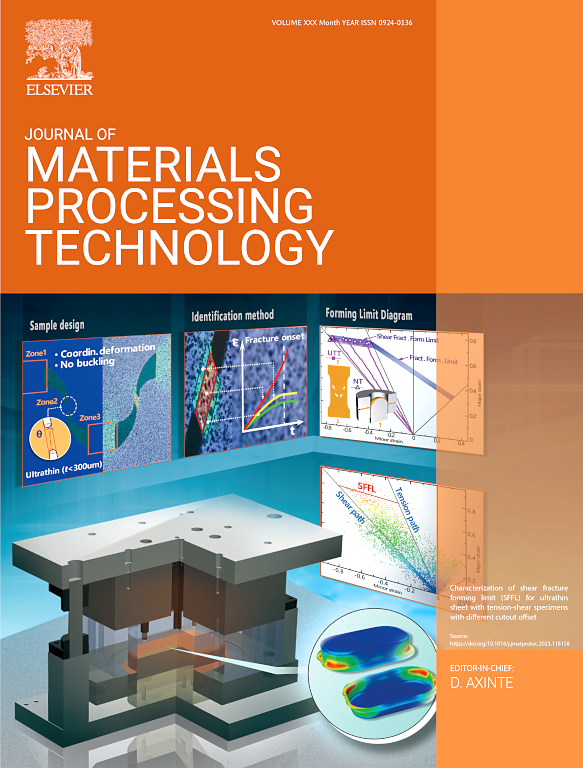Investigating the influence of biodegradable nanofluid process cooling on dynamic recrystallization and grain microstructure in friction stir welding of AA6082 alloy
IF 6.7
2区 材料科学
Q1 ENGINEERING, INDUSTRIAL
Journal of Materials Processing Technology
Pub Date : 2025-02-01
DOI:10.1016/j.jmatprotec.2024.118700
引用次数: 0
Abstract
Heat generation during friction stir welding (FSW) significantly impacts heat-treatable aluminium alloy grain microstructure and precipitation behavior. Therefore, it is crucial to employ cooling techniques to reduce the excessive heat in the welding zone. Here, a new biodegradable nanofluid (comprising sunflower oil and copper oxide) process cooling was utilized to reduce the excess heat during the FSW of AA6082 alloy. Compressed air was mixed with the nanofluid, creating a mist spray known as minimum quantity lubrication (n-MQL), which was then sprayed onto the surface during FSW (i.e., n-MQL-FSW). A detailed comparative analysis of microstructure evolution and tensile behavior was performed on the FSW joints under normal and biodegradable process cooling conditions. A significant reduction in temperature was observed during n-MQL-FSW, and it also reduces asymmetrical heat transfer during welding. Additionally, the promotion of nucleation rate and growth of equiaxed grain occurs in the nugget zone (NZ), which dominates the continuous dynamic recrystallization (CDRX) during n-MQL-FSW. Moreover, the bulging frequency of high-angle grain boundaries (HAGBs) in NZ was also enhanced compared to FSW. The average grain size results of 25.81 ± 3.69 µm in the NZ were found for FSW observed in the shoulder-affected zone and then decreased to 21.36 ± 1.14 μm for n-MQL-FSW at the same position. Furthermore, the fraction of substructure in NZ was reduced, while the fraction of recrystallization was increased during the n-MQL-FSW. The tensile strength was ∼ 81 %, and ∼ 64 % of the BM was observed for n-MQL-FSW and FSW, respectively. The elongation percentage did not show any significant changes during both processes. This study reveals an efficient approach to reducing excess heat input during the FSW process to manufacture high-performance components.
求助全文
约1分钟内获得全文
求助全文
来源期刊

Journal of Materials Processing Technology
工程技术-材料科学:综合
CiteScore
12.60
自引率
4.80%
发文量
403
审稿时长
29 days
期刊介绍:
The Journal of Materials Processing Technology covers the processing techniques used in manufacturing components from metals and other materials. The journal aims to publish full research papers of original, significant and rigorous work and so to contribute to increased production efficiency and improved component performance.
Areas of interest to the journal include:
• Casting, forming and machining
• Additive processing and joining technologies
• The evolution of material properties under the specific conditions met in manufacturing processes
• Surface engineering when it relates specifically to a manufacturing process
• Design and behavior of equipment and tools.
 求助内容:
求助内容: 应助结果提醒方式:
应助结果提醒方式:


